Bathroom floor tiles - choose the best one
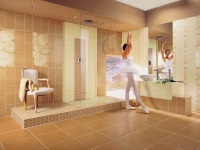
In recent years, the variety of types, shapes and colors of ceramic tiles is off the charts. To say that some tiles are better than others - subjective. Many options will work for each specific location. But additional information will help lean towards one of the solutions, which will depend only on your choice.
Deciphering the signs
On the back of each package of tiles very often put pictograms in the form of a list or tables.
Let's hold a literacy for the novice repairer:
- The sign of the foot or hand on a black background divides tiles into two main varieties: tiles for the floor or tiles for walls. If the foot is shaded in the picture, this gives information about the increased resistance to abrasion.
- The elongated rectangle with arrows at the top and bottom indicates the thickness of the tile.
- The number on the flame tongue 1 or 2 indicates the number of times the tile has been fired.
- The grid of squares in different tones warns of the possibility of non-uniform color shades of tiles within the same package.
- Three similar cube icons with the inscriptions Kg., Mg., Pozzi. The icons Ag, Au, Pt, Pt, Pt, Pt, Pt, Pt, Pt, Pt, Pt, Pt, Pt, Pt, Pt, and Pt.
- Pictograms with the letters Ag Au Pt informs about the content of precious metals such as silver, gold and platinum.
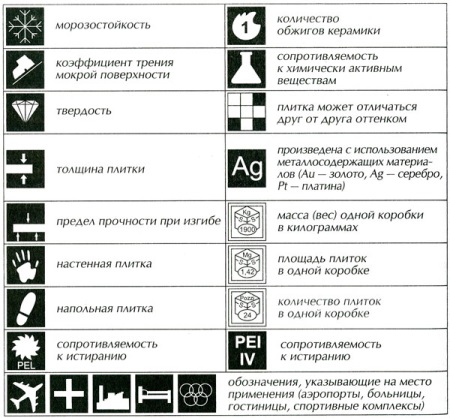
In addition to these characteristics, it will be interesting to know about the properties of the tiles:
- frost resistance, indicated by the silhouette snowflakes,
- Resistance to chemically active substances is shown in the form of drawing of a laboratory flask,
- the boot sign on a sloping surface tells about the degree of slipperiness of the tile surface. A similar sign, but with a flat surface, will assure the buyer of an increased ability to retain slippage.
- scalpel point on the surface - surface hardness,
- drill entering the tile - abrasion resistance,
- the icon of the half sun, passing into the half snowflake, will assure the tile's resistance to temperature fluctuations.
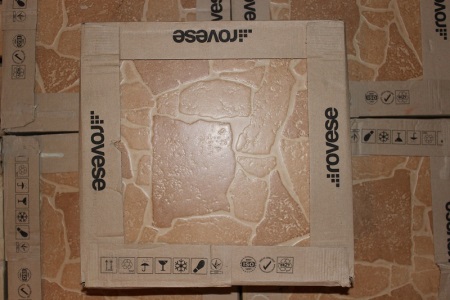
Some pictograms are given with numerical information, some simply by their absence or presence tell us about the qualities of the chosen product.
The doubling or tripling of a pictogram means that this characteristic of the tile is enhanced.
So abrasion resistance can be indicated in the form of a toothed saw disk icon, a double such icon, or it can be given in specific degrees of scale.
Similarly, the symbol of a faceted diamond indicates the degree of hardness and strength of the coating..
There is a pictogram of resistance to bending, which is also clear from the picture.
Some manufacturers make life easier for buyers in advance and draw icons with a specific designation of places where it is recommended to apply the tile coating.
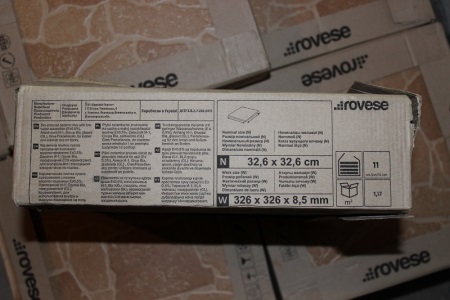
Icons of an airplane, the silhouette of factory buildings, sports rings, a medical cross or a hotel bed speak for themselves.
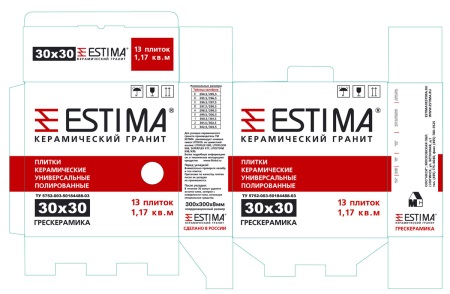
Types
According to the composition and method of production it is customary to divide tiles into types:
- Majolica, faience, cottoforte, terraglia, monoporosa, biocottura - are the types that are better to remember, but only either for general erudition or not to take them for the purpose of laying in the bathroom, because their indicators of moisture resistance, porosity and resistance to abrasion are lower than those required in this type of room.
- But if you've read the names sotto or monoculture, you may already be thinking about this topic.
- In the case of cotto, clinker or especially porcelain stoneware - seriously consider these options. The quality of such tiles is just right for bathrooms.
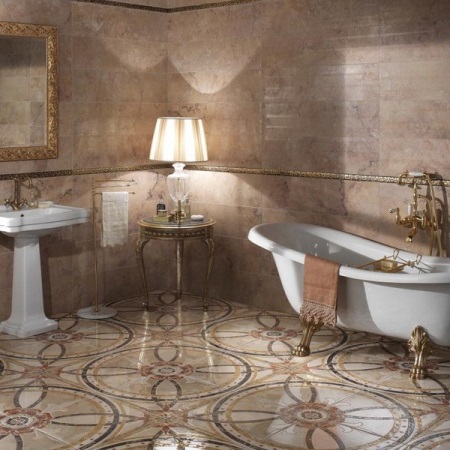
The main characteristics and requirements
Consider in detail what values of the characteristics should be limited when choosing a coating on the floor of the bathroom.
For fans of precise numbers and information: there is a generally accepted document that defines the standard values of the characteristics of tile coatings - EN ISO 13006.
According to this document, it is possible to distinguish several points relating to one or another indicator.
Hardness and resistance
EN101 is responsible for the surface hardness.
The already existing table of the hardness of materials lists 10 substances in ascending order of hardness, from 1 corresponding to the hardness of talc to 10, which diamond has. Since scratches on the floor are most often caused by sand brought on street shoes, it is not difficult to calculate that the tiles should not be softer than this sand.
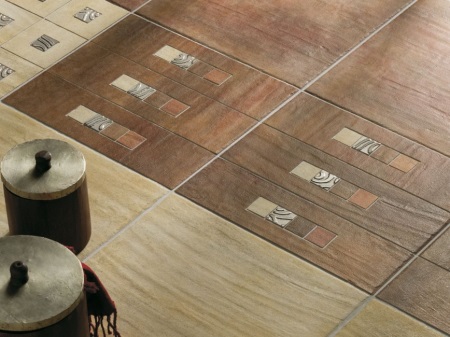
Translated into geological language, not less than the hardness of quartz, that is - 8, 9 or a perfect 10.
The chapter of EN154 deals with the resistance of the tiles to abrasion or abrasion resistance.
Based on that, the tiles are divided into 5 categories.
The weakest resistance is PEI I, followed by PEI II, PEI III, PEI IV, and the most resistant tile is PEI V.
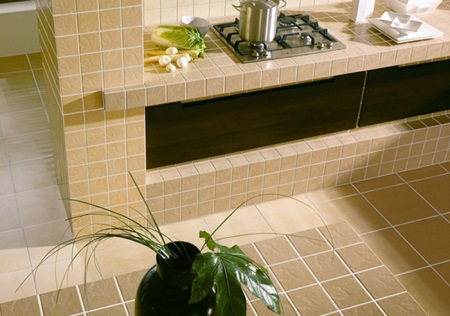
The first type of tile can be used only in places where attendance is low, and the probability of abrasive materials is almost excluded. For example, bathrooms.
The second type can be recommended for places where there is more foot traffic and more damaging factors. (These are bedrooms, rooms, offices).
The third category is advisable to use in hallways, kitchens, corridors, because it can withstand a significant traffic and the number of damaging factors.
The fourth is most reasonable to floor where attendance is no longer personal, but mass, that is, offices, stores, etc.
And finally, if you choose the fifth type, it is universal. And it is suitable even for airports, train stations and other similar places.
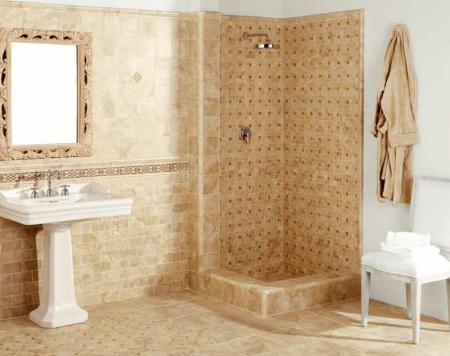
Choosing a tile by this characteristic, you can buy tiles 1 and 2 points for baths.
Resistance to moisture
It is not superfluous to study the indicators of moisture permeability of tiles, in turn highly dependent on the porosity of the material, due to the fact that the coating will be installed in a place where both steam and water will be constantly present, as opposed to other interior spaces. It is expressed as a percentage.
The lower this figure, the more suitable tiles for use in the bathroom.
For comparison, majolica tiles have a 15-25% moisture absorption, so it is not considered as a contender to buy in bathrooms in general, but for the floor - especially. The numbers 7 - 15% - are already very good, and from 0 to 6% - just perfect.
Porcelain stoneware has a degree of impermeability - on the border of 0, 05%, which makes it very attractive for the option you are looking for.
Chemical resistance
According to the chemical resistance are known such gradations:
- AA (the highest, the first degree of resistance). According to the results of tests, it has no surface layer alterations.
- A (group when the tests showed slight changes).
- B (damage in degree can be considered moderate).
- C (weak resistance to the effects of chemicals, changes after the tests reach partial destruction).
- D (very weak resistance, in which, as a result of exposure to all aggressive chemicals, the tile is completely destroyed).
This point should be paid special attention to when renovating the bathroom, because the bathroom contains most of the stock of detergents and cleaning chemicals. And there is a huge chance that tiles that are unstable in this regard will form a stain, or even a hole in your beautifully laid out picture.
Degree of slip.
But even more vital is choosing an anti-slip floor.
Slipping in a confined space means possible fractures and other tragic consequences.
Make sure that the packaging of tiles has a sign "Anti-slip", and for reinsurance - a good advice: apply after laying the floor on top of it additional compound that protects against the possibility of slipping.
On the contrary, the thickness of the coating is one of the most understandable and least influential. Less than 7 mm. floor tile simply do not release, to latch on to a layer of more than 1.5 cm. simply makes no sense, the optimal height for the floor will be 10 - 15 mm.
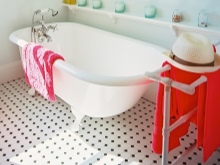
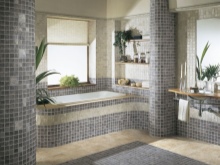
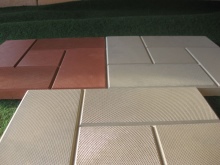
Quality standards
All manufactured tiles must be of high quality. Otherwise, it is a defect and it is subject to return and/or destruction.
In general, in the manufacture of tiles, standardization is not required.
But self-respecting firms that declare the compliance of their products with generally accepted standards, able to confirm it with all sorts of certificates and other technical documentation, adhere to certain limits, about which it will be useful to know.
In principle, you can set a goal and buy the hardest, most wear-resistant, frostproof and water-resistant.
But for this you will not just pay, but many times overpay.
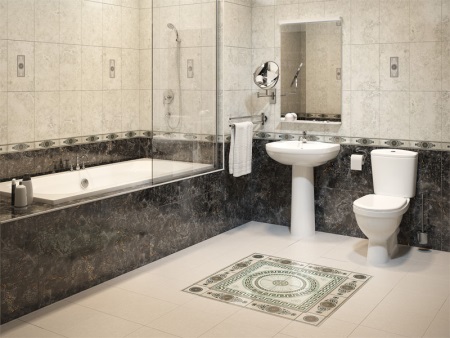
For the buyer who does not want to squander money, it is important the best combination of quality and price of tile, which will suit him.
But surely the tiles of the highest class will give you fewer unpleasant surprises than it can happen with a tile of the lower class. These classes are three by standard and usually distinguished by what color the inscriptions are made on the package. Red is Grade 1, blue is Grade 2, and green is Grade 3.
One of the most oft-repeated commandments of our time has become the phrase, "Beware of fakes."
When you shop at small, untested stores, you run the risk of buying tiles that don't meet quality standards. In addition, the stock in such non-global places may also be small, which means that when trying to buy more missing tiles, you may be faced with a situation where because of the two or three missing tiles will break your whole idea of a pattern.

The choice of colors and design, fashion trends
When the optimal qualities of the tiles are outlined, there comes the most favorable, although no less responsible moment - the choice of pattern. Once upon a time, our consumer was available only Czech tiles, square, standard in dim shades of color.
Now we can say with certainty that whatever figure a buyer would like to have in the bathroom, you can pick up and sizes and shapes and colors.
If you follow the fashion and want to keep up with it, then the best option is to explore the catalogs of brand-name companies. They will orient you to the latest trends in fashion. We can add that extremes are fashionable during recent years: either what is natural or indistinguishable from natural, natural colors - green, bright yellow with a lemon hue, violet and bell-shaped, colors and textures of materials such as wood, leather, iron!
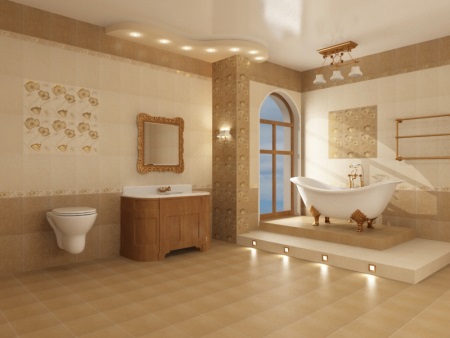
You can lick the imitation of chocolate or imitation gold. Practical textures, which do not feature monochrome colors on which any extraneous droplet is noticeable, but "motley" tiles in the form of small multidirectional squares are becoming more and more fashionable.
To reduce the dangerous slip willingly take tiles with a protruding fine texture.
The other extreme is ultramodernity in the form of 3D tiles, which change the spatial perception.
There are also glass tiles, which are very expensive in the case of special hardening, but which create unique views.
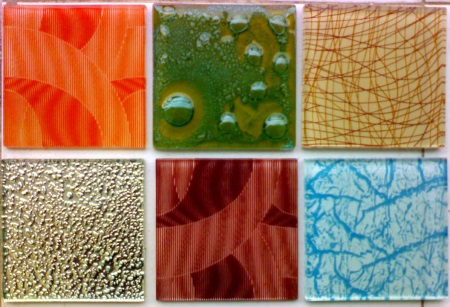
Do you want to be original? You are welcome! Your imagination is limited only by your means.
But let me draw your attention to the fact that the bathroom is usually finished with the expectation that at least 5 years about this problem will not be remembered.
So at the peak of fashion can be only a year or two, or even less.
More relaxed classics - forever. You can try to reinvent the wheel: to build your own, your own and only your own version of the pattern, but sometimes it is enough to choose the color you like, and do the rest according to generally accepted rules: the walls are lighter than the floor, moderation in the borders and patterns, the relevance of them.
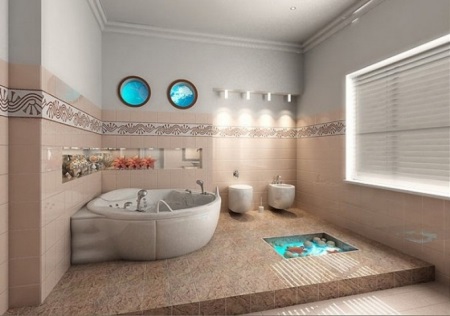
Manufacturers
In the matter of choosing a manufacturer there is no commonplace truth among the masters. It is necessary to be guided by the quality of the tiles themselves.
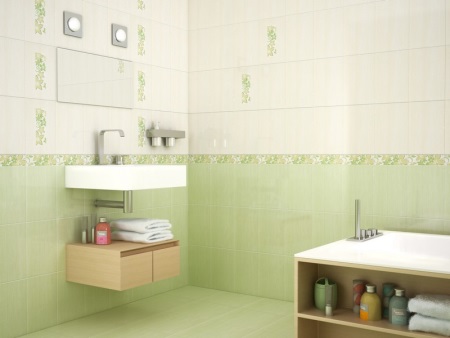
If we talk about the countries-manufacturers, then:
- Italian tiles are famous for their quality and variety of collections.
- Spanish, French, Portuguese and German are more democratic in price.
- Their positions are held by Poland, Turkey and Ukraine.
- As a rule, manufacturers from Russia and China - not very reliable manufacturers, the choice of material from firms of these manufacturers resembles a game of Russian roulette. Can be lucky, and maybe not.
When choosing a tile, guided not so much by the manufacturer as the characteristics of the tile. Buy materials only in reputable stores.
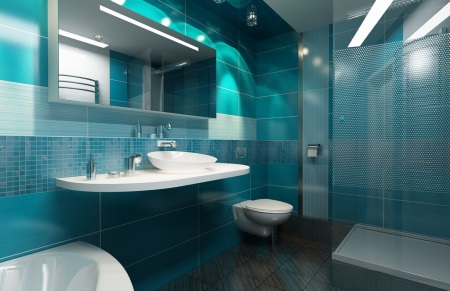
Prices
The question of prices - the most complicated. Experts say that the most budgetary options for flooring in an average-sized bathroom - about 10 thousand.
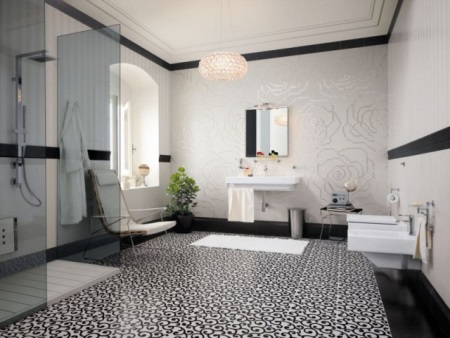
The upper bar, understandably, does not exist. Since the prices of collections and prices for individual materials vary at times, a lot of financial costs will have to experience lovers of mosaics or decorative inserts.
Laying
The bathroom belongs to the premises of increased complexity in the laying of tiles on the floor.
Let's dwell on the main points, which will not be interesting to experienced in the repair of people, but maybe open America for beginners amateurs.
When you have thoughtfully approached the purchase of the right amount of tiles, glue to it, grout and tools (at least one toothed trowel, and better yet two flat ones, one of which is rubber or silicone for applying grout), you can begin to perform the laying itself.
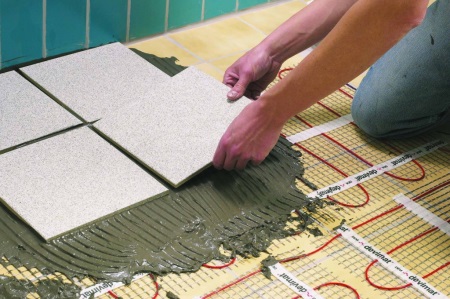
Rule #1.The floor must be flat, hard and clean.
Rule #2: The floor in the bathroom is best subjected to waterproofing. There are many ways to do it. For example, to smear a special compound floor, including connections with the walls and the corners. It makes sense to lay under the composition waterproofing tape.
Rule #3: In computer special programs or simply by laying out the tiles on the floor in the right order, make sure that the layout is correct. Do not hesitate, but also do not hurry, do not make a mistake in small things: spread the adhesive on the floor with a smooth trowel on an area no larger than a square meter, with a notched trowel apply stripes on it. Good advice - spread the tiles too, but so that when you put them on the floor, the traces of the teeth are not parallel. This, according to the laws of physics, provides greater strength and mobility when you change the slope of the surface while pressing.
Professionals cannot do without a small rubber mallet. Its tapping on the tile will determine the speed of work and the evenness of the result. It is ideal to check from time to time to see if there are any voids under the tile. This can be done this way: tear off the tile immediately after it is laid and inspect the surface to see if the adhesive is even. Note any imperfections and again, scratch the surface with the teeth of a trowel and put the tile back in place.

Rule #4: Start at the corner farthest from the door. This way you will gradually move toward the exit and will not find yourself trapped in a corner in front of a surface that is better not to step on for several days.
Rule #5: The seams are controlled by the evenness with special crosses. We advise you not to use butt-to-butt flooring, because it is quite difficult and has its own limitations. After gluing all the tiles, let the glue dry. Then (as much as possible) clean the seams and apply grout.
A little more time and, having washed (not with a wet rag) with a damp sponge the tile surface, begin to admire and indulge in delights.
Do everything according to the studied instructions of the adhesive and tile. Do not violate these requirements. Will pay back a hundredfold, help you avoid ridiculously big and annoying little mistakes.
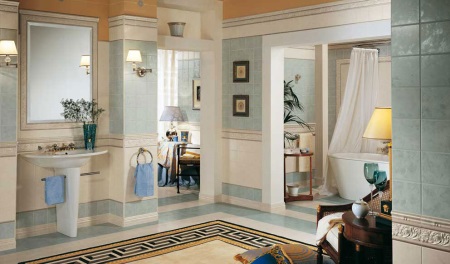





Porcelain stoneware should be chosen. Once you put it in, you don't have to worry about the floor losing its appearance or cracking.